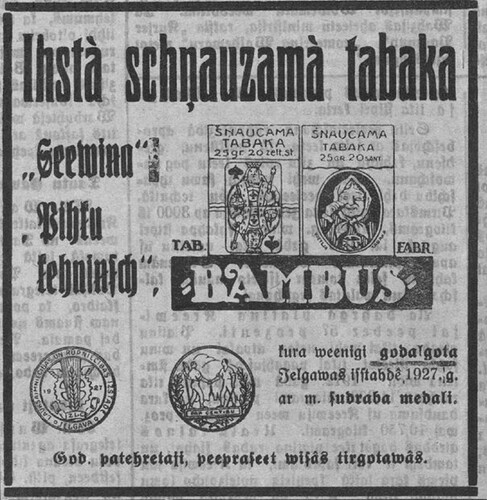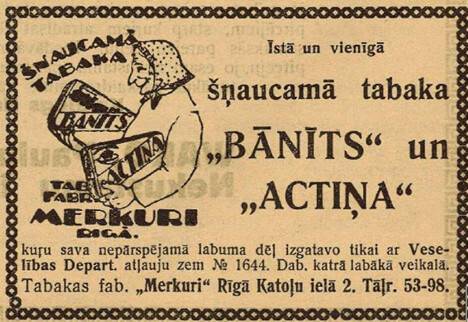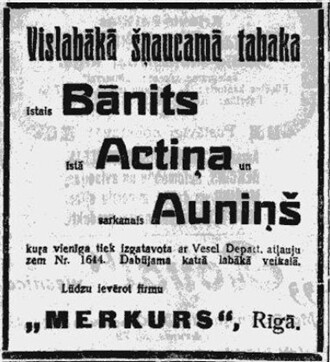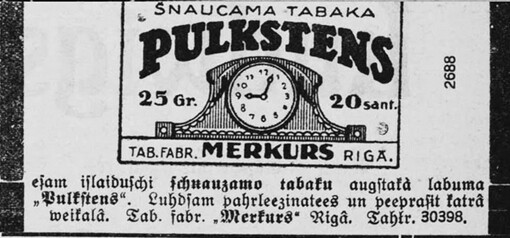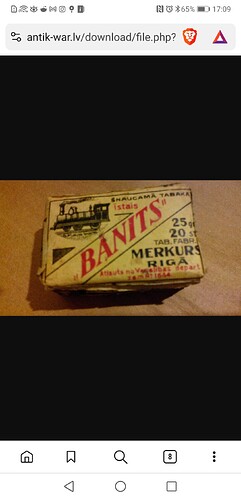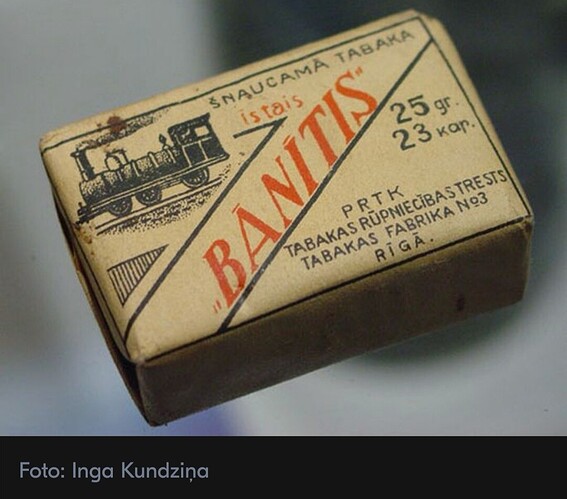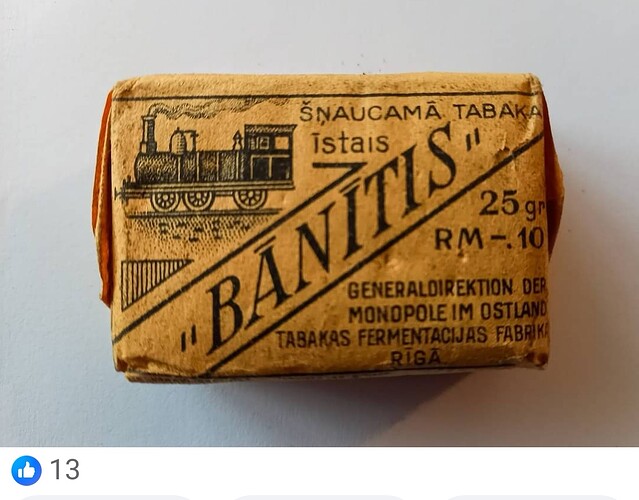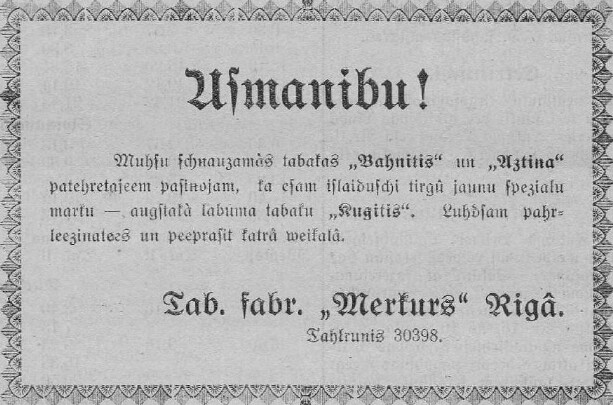I leave here a short list of companies that operated in Latvia in the period 1918-1939.
“Bambus”
Place of business: Marijas iela 136, Riga
Years of business: approx. 1923 - approx. 1938
Owner: Kristine Caka (born 1877 in Burtnieki)
Snuff: Sievina, Rocina, Pikitis, Pika kungs“Merkuri”
Place of business: Katoļu iela 2, Riga
Years of business: approx 1922 - approx. 1928
Snuff: Sarkanais Auniņš, Banits, Actiņa, Aunins, Pulkstens“Trud”
Place of business: Ģertrūdes ielā 108, Riga
Years of operation: approx. 1924 - approx. 1936
Snuff: Milda, Balodītis, Zelta Dīķis
Other interesting facts: In 1929, the company employed 100 people.“Riga”
Place of business: Liepāja
Years of business: approx. 1929
Snuff: VečuksA. Jaunzems
Place of business: Riga
Years of business: approx. 1934“Dukats”
Place of business: Riga
Years of business: approx. 1923 - approx. 1929
Owner: T. Lifšic, G. Kiš un J. Vaserman
Snuff: Pakava, Banits, Actina
Other interesting facts: Main bad character. Their dishonest actions in counterfeiting labels and selling products of the same name were complained about by, among others, “Merkuri”, “Trud”, but also the German company “Mundel un Ko.”.
Apart from these companies, the following foreign companies operated in Latvia:
1924: Haus Neuerburg
1924: Cigarettenfabrik Muratti Akteingesellschaft
1924: Mundel un Ko
1936: Rūtenberg
1936: Šereševskis
After the war, I found two memoirs of “Banitis” snuff - from 1946 and 1949, but they had no connection with the previously mentioned companies.
